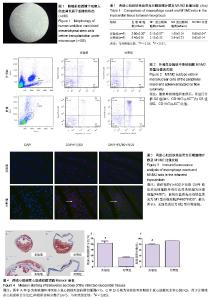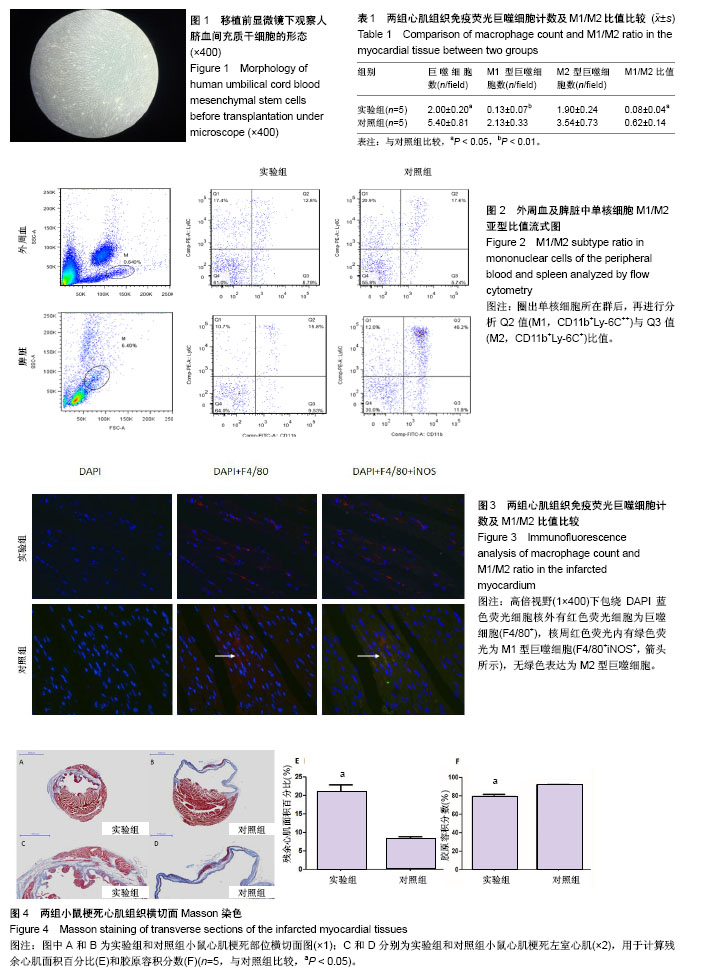| [1] Jung M, Ma Y, Iyer RP, et al. IL-10 improves cardiac remodeling after myocardial infarction by stimulating M2 macrophage polarization and fibroblast activation.Basic Res Cardiol. 2017;112(3):33.[2] Wang B, Zhang L, Cao H, et al. Myoblast transplantation improves cardiac function after myocardial infarction through attenuating inflammatory responses.Oncotarget. 2017;8(40):68780-68794.[3] Zarrouk-Mahjoub S, Zaghdoudi M, Amira Z, et al. Pro- and anti-inflammatory cytokines in post-infarction left ventricular remodeling. Int J Cardiol. 2016;221:632-636.[4] 袁春菊,余国龙.心肌梗死后心肌组织炎症双重效应与骨髓间充质细胞的调节作用[J].临床与病理杂志,2014, 34(2):212-215.[5] Frantz S, Hofmann U, Fraccarollo D, et al. Monocytes/macrophages prevent healing defects and left ventricular thrombus formation after myocardial infarction. FASEB J. 2013;27(3):871-881.[6] Lee TM, Chang NC, Lin SZ.Dapagliflozin, a selective SGLT2 Inhibitor, attenuated cardiac fibrosis by regulating the macrophage polarization via STAT3 signaling in infarcted rat hearts.Free RadicBiol Med. 2017; 104:298-310.[7] Frantz S, Nahrendorf M.Cardiac macrophages and their role in ischaemic heart disease.Cardiovasc Res. 2014;102(2):240-248.[8] Dayan V, Yannarelli G, Billia F, et al. Mesenchymal stromal cells mediate a switch to alternatively activated monocytes/macrophages after acute myocardial infarction. Basic Res Cardiol. 2011;106(6): 1299-1310.[9] Yu G, Borlongan CV, Stahl CE, et al. Transplantation of human umbilical cord blood cells for the repair of myocardial infarction.Med Sci Monit. 2008;14(10):RA163-172.[10] Pinho-Ribeiro V, Maia AC, Werneck-de-Castro JP, et al. Human umbilical cord blood cells in infarcted rats.Braz J Med Biol Res. 2010;43(3):290-296.[11] Swirski FK, Nahrendorf M, Etzrodt M, et al. Identification of splenic reservoir monocytes and their deployment to inflammatory sites. Science. 2009;325(5940):612-616.[12] Delewi R, van der Laan AM, Robbers LF, et al. Long term outcome after mononuclear bone marrow or peripheral blood cells infusion after myocardial infarction.Heart. 2015;101(5):363-368.[13] Sun L, Xu R, Sun X, et al. Safety evaluation of exosomes derived from human umbilical cord mesenchymal stromal cell.Cytotherapy. 2016; 18(3):413-422.[14] van den Akker F, Deddens JC, Doevendans PA,et al.Cardiac stem cell therapy to modulate inflammation upon myocardial infarction. Biochim Biophys Acta. 2013; 1830(2):2449-2458.[15] 袁春菊,余国龙,李文斌.多次静脉移植人脐血单个核细胞对家兔急性心肌梗死炎症反应影响[J].中华器官移植杂志, 2011,32(7):162-165.[16] Kallikourdis M, Martini E, Carullo P, et al. T cell costimulation blockade blunts pressure overload-induced heart failure.Nat Commun. 2017;8: 14680.[17] Tajbakhsh A, Rezaee M, Kovanen PT, et al. Efferocytosis in atherosclerotic lesions: Malfunctioning regulatory pathways and control mechanisms.PharmacolTher. 2018 Feb 11.doi: 10.1016/j.pharmthera.2018.02.003. [Epub ahead of print][18] Hulsmans M, Sager HB, Roh JD, et al. Cardiac macrophages promote diastolic dysfunction.J Exp Med. 2018;215(2):423-440.[19] Humeres C, Vivar R, Boza P, et al. Cardiac fibroblast cytokine profiles induced by proinflammatory or profibrotic stimuli promote monocyte recruitment and modulate macrophage M1/M2 balance in vitro.J Mol Cell Cardiol. 2016;101:69-80.[20] Yuan C, Yu G, Yang T, et al. Enhanced therapeutic effects on acute myocardial infarction with multiple intravenous transplantation of human cord blood mononuclear cells.Int J Cardiol. 2013;168(3): 2767-2773.[21] Lee RH, Pulin AA, Seo MJ, et al. Intravenous hMSCs improve myocardial infarction in mice because cells embolized in lung are activated to secrete the anti-inflammatory protein TSG-6. Cell Stem Cell. 2009;5(1):54-63.[22] Borlongan CV, Hadman M, Sanberg CD, et al. Central nervous system entry of peripherally injected umbilical cord blood cells is not required for neuroprotection in stroke.Stroke. 2004;35(10):2385-2389.[23] Cho DI, Kim MR, Jeong HY, et al. Mesenchymal stem cells reciprocally regulate the M1/M2 balance in mouse bone marrow-derived macrophages.ExpMol Med. 2014;46:e70.[24] Ben-Mordechai T, Holbova R, Landa-Rouben N, et al. Macrophage subpopulations are essential for infarct repair with and without stem cell therapy.J Am Coll Cardiol. 2013;62(20):1890-1901.[25] Holladay CA, Duffy AM, Chen X, et al. Recovery of cardiac function mediated by MSC and interleukin-10 plasmid functionalised scaffold. Biomaterials. 2012;33(5):1303-1314.[26] Bloom DD, Centanni JM, Bhatia N, et al. A reproducible immunopotency assay to measure mesenchymal stromal cell-mediated T-cell suppression.Cytotherapy. 2015;17(2):140-151. |



